Marieke van Erp
Explicit vs. Implicit Biographies: Evaluating and Adapting LLM Information Extraction on Wikidata-Derived Texts
Sep 18, 2025Abstract:Text Implicitness has always been challenging in Natural Language Processing (NLP), with traditional methods relying on explicit statements to identify entities and their relationships. From the sentence "Zuhdi attends church every Sunday", the relationship between Zuhdi and Christianity is evident for a human reader, but it presents a challenge when it must be inferred automatically. Large language models (LLMs) have proven effective in NLP downstream tasks such as text comprehension and information extraction (IE). This study examines how textual implicitness affects IE tasks in pre-trained LLMs: LLaMA 2.3, DeepSeekV1, and Phi1.5. We generate two synthetic datasets of 10k implicit and explicit verbalization of biographic information to measure the impact on LLM performance and analyze whether fine-tuning implicit data improves their ability to generalize in implicit reasoning tasks. This research presents an experiment on the internal reasoning processes of LLMs in IE, particularly in dealing with implicit and explicit contexts. The results demonstrate that fine-tuning LLM models with LoRA (low-rank adaptation) improves their performance in extracting information from implicit texts, contributing to better model interpretability and reliability.
The Wind in Our Sails: Developing a Reusable and Maintainable Dutch Maritime History Knowledge Graph
Nov 10, 2021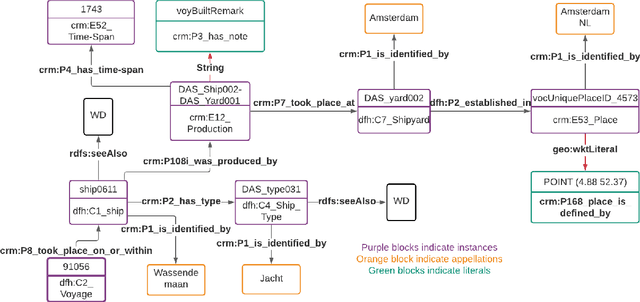

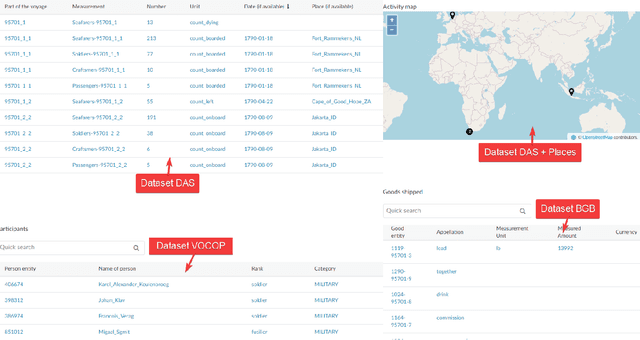
Abstract:Digital sources are more prevalent than ever but effectively using them can be challenging. One core challenge is that digitized sources are often distributed, thus forcing researchers to spend time collecting, interpreting, and aligning different sources. A knowledge graph can accelerate research by providing a single connected source of truth that humans and machines can query. During two design-test cycles, we convert four data sets from the historical maritime domain into a knowledge graph. The focus during these cycles is on creating a sustainable and usable approach that can be adopted in other linked data conversion efforts. Furthermore, our knowledge graph is available for maritime historians and other interested users to investigate the daily business of the Dutch East India Company through a unified portal.
Marriage is a Peach and a Chalice: Modelling Cultural Symbolism on the SemanticWeb
Nov 03, 2021
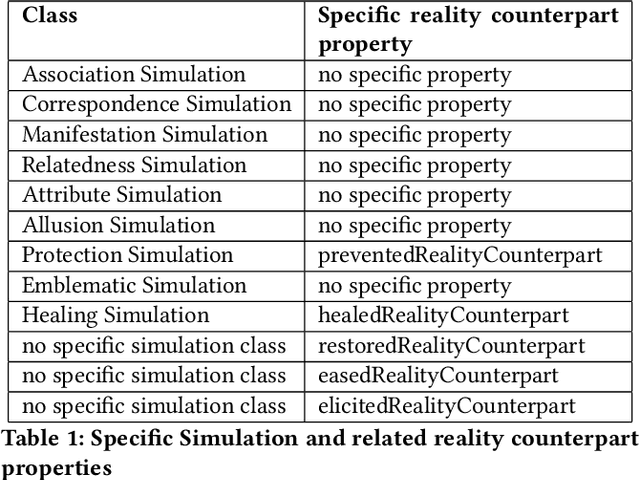


Abstract:In this work, we fill the gap in the Semantic Web in the context of Cultural Symbolism. Building upon earlier work in, we introduce the Simulation Ontology, an ontology that models the background knowledge of symbolic meanings, developed by combining the concepts taken from the authoritative theory of Simulacra and Simulations of Jean Baudrillard with symbolic structures and content taken from "Symbolism: a Comprehensive Dictionary" by Steven Olderr. We re-engineered the symbolic knowledge already present in heterogeneous resources by converting it into our ontology schema to create HyperReal, the first knowledge graph completely dedicated to cultural symbolism. A first experiment run on the knowledge graph is presented to show the potential of quantitative research on symbolism.
Knowledge Graphs Evolution and Preservation -- A Technical Report from ISWS 2019
Dec 22, 2020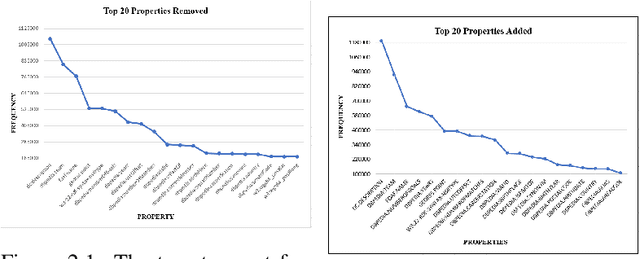
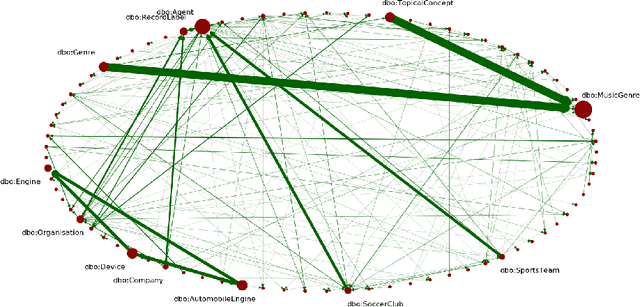
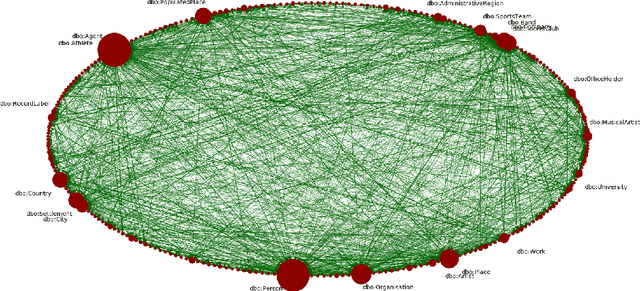
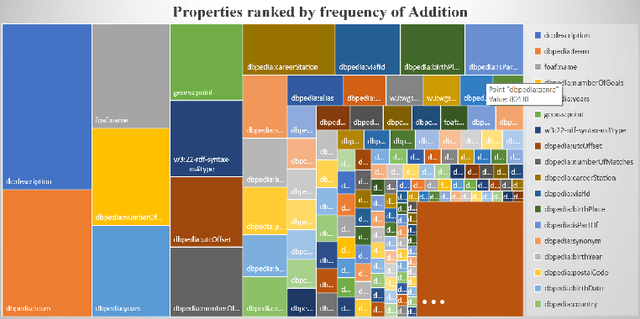
Abstract:One of the grand challenges discussed during the Dagstuhl Seminar "Knowledge Graphs: New Directions for Knowledge Representation on the Semantic Web" and described in its report is that of a: "Public FAIR Knowledge Graph of Everything: We increasingly see the creation of knowledge graphs that capture information about the entirety of a class of entities. [...] This grand challenge extends this further by asking if we can create a knowledge graph of "everything" ranging from common sense concepts to location based entities. This knowledge graph should be "open to the public" in a FAIR manner democratizing this mass amount of knowledge." Although linked open data (LOD) is one knowledge graph, it is the closest realisation (and probably the only one) to a public FAIR Knowledge Graph (KG) of everything. Surely, LOD provides a unique testbed for experimenting and evaluating research hypotheses on open and FAIR KG. One of the most neglected FAIR issues about KGs is their ongoing evolution and long term preservation. We want to investigate this problem, that is to understand what preserving and supporting the evolution of KGs means and how these problems can be addressed. Clearly, the problem can be approached from different perspectives and may require the development of different approaches, including new theories, ontologies, metrics, strategies, procedures, etc. This document reports a collaborative effort performed by 9 teams of students, each guided by a senior researcher as their mentor, attending the International Semantic Web Research School (ISWS 2019). Each team provides a different perspective to the problem of knowledge graph evolution substantiated by a set of research questions as the main subject of their investigation. In addition, they provide their working definition for KG preservation and evolution.
Towards Olfactory Information Extraction from Text: A Case Study on Detecting Smell Experiences in Novels
Dec 06, 2020


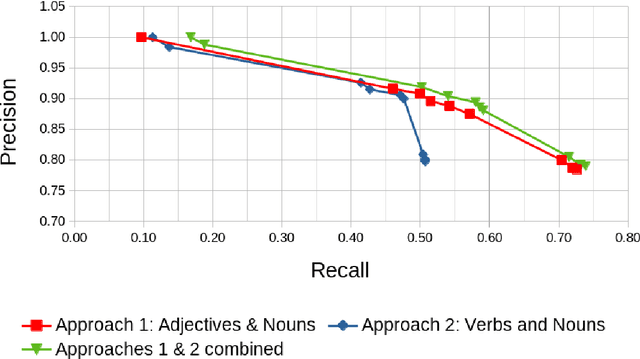
Abstract:Environmental factors determine the smells we perceive, but societal factors factors shape the importance, sentiment and biases we give to them. Descriptions of smells in text, or as we call them `smell experiences', offer a window into these factors, but they must first be identified. To the best of our knowledge, no tool exists to extract references to smell experiences from text. In this paper, we present two variations on a semi-supervised approach to identify smell experiences in English literature. The combined set of patterns from both implementations offer significantly better performance than a keyword-based baseline.
Ontologies in CLARIAH: Towards Interoperability in History, Language and Media
Apr 06, 2020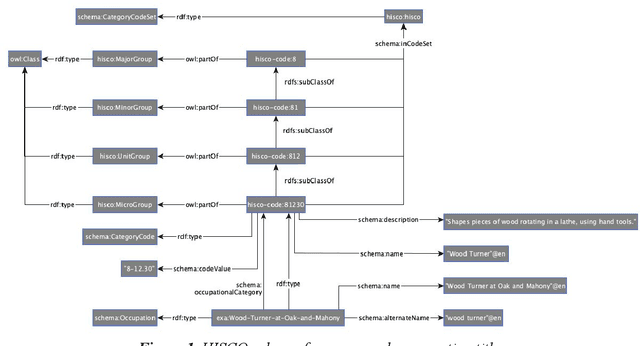
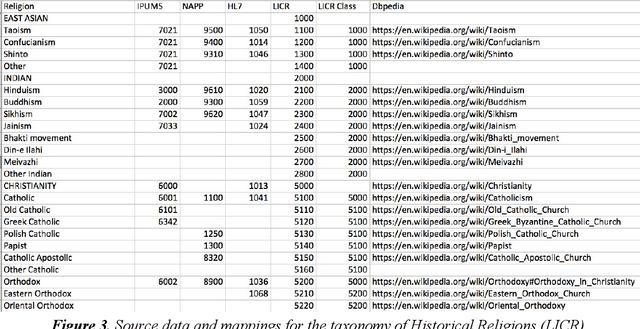
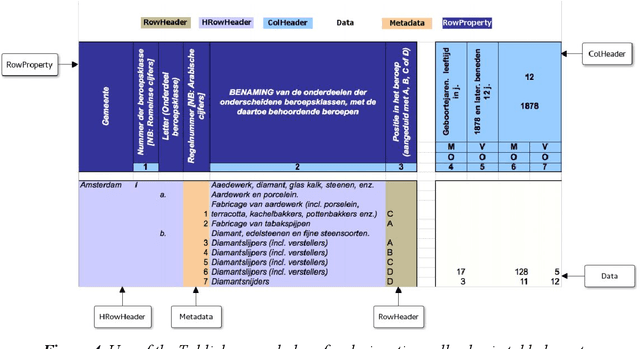
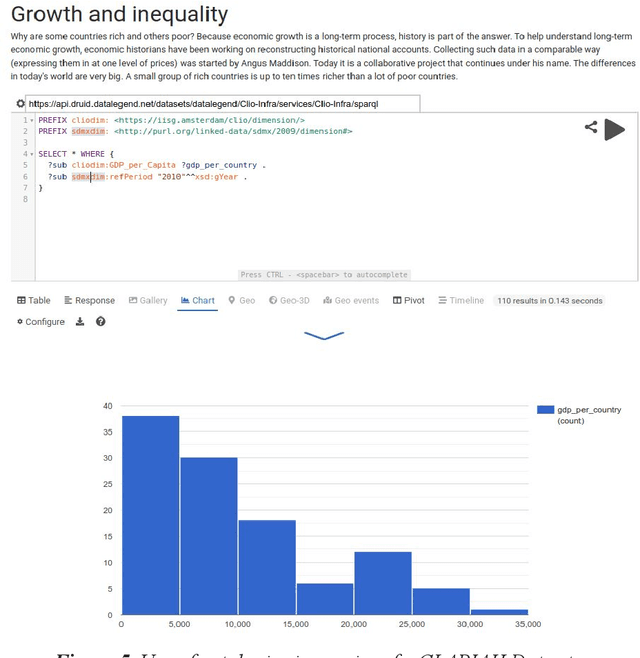
Abstract:One of the most important goals of digital humanities is to provide researchers with data and tools for new research questions, either by increasing the scale of scholarly studies, linking existing databases, or improving the accessibility of data. Here, the FAIR principles provide a useful framework as these state that data needs to be: Findable, as they are often scattered among various sources; Accessible, since some might be offline or behind paywalls; Interoperable, thus using standard knowledge representation formats and shared vocabularies; and Reusable, through adequate licensing and permissions. Integrating data from diverse humanities domains is not trivial, research questions such as "was economic wealth equally distributed in the 18th century?", or "what are narratives constructed around disruptive media events?") and preparation phases (e.g. data collection, knowledge organisation, cleaning) of scholars need to be taken into account. In this chapter, we describe the ontologies and tools developed and integrated in the Dutch national project CLARIAH to address these issues across datasets from three fundamental domains or "pillars" of the humanities (linguistics, social and economic history, and media studies) that have paradigmatic data representations (textual corpora, structured data, and multimedia). We summarise the lessons learnt from using such ontologies and tools in these domains from a generalisation and reusability perspective.
Analysis of Named Entity Recognition and Linking for Tweets
Oct 27, 2014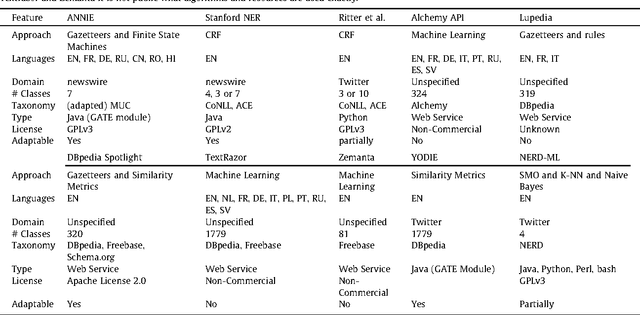
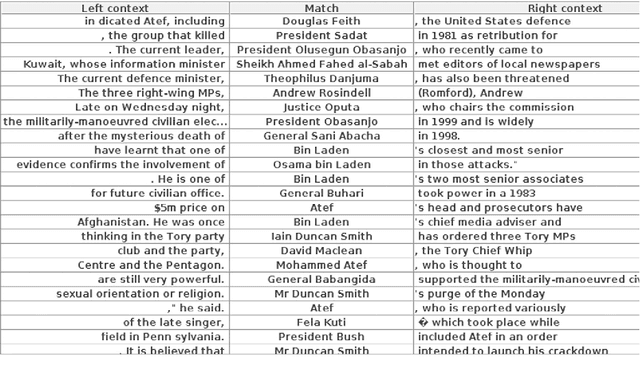
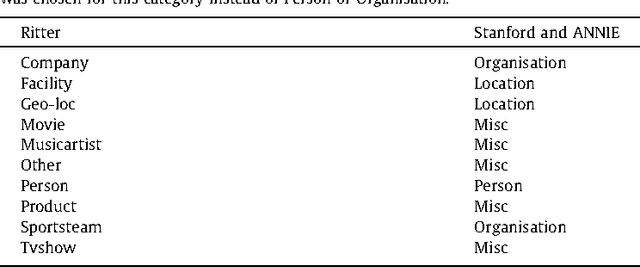
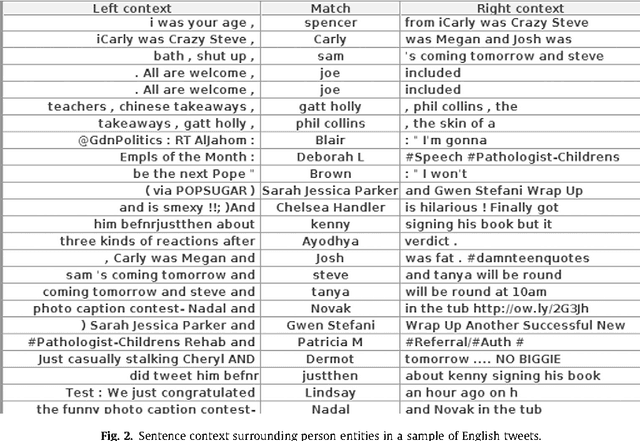
Abstract:Applying natural language processing for mining and intelligent information access to tweets (a form of microblog) is a challenging, emerging research area. Unlike carefully authored news text and other longer content, tweets pose a number of new challenges, due to their short, noisy, context-dependent, and dynamic nature. Information extraction from tweets is typically performed in a pipeline, comprising consecutive stages of language identification, tokenisation, part-of-speech tagging, named entity recognition and entity disambiguation (e.g. with respect to DBpedia). In this work, we describe a new Twitter entity disambiguation dataset, and conduct an empirical analysis of named entity recognition and disambiguation, investigating how robust a number of state-of-the-art systems are on such noisy texts, what the main sources of error are, and which problems should be further investigated to improve the state of the art.
* 35 pages, accepted to journal Information Processing and Management
 Add to Chrome
Add to Chrome Add to Firefox
Add to Firefox Add to Edge
Add to Edge